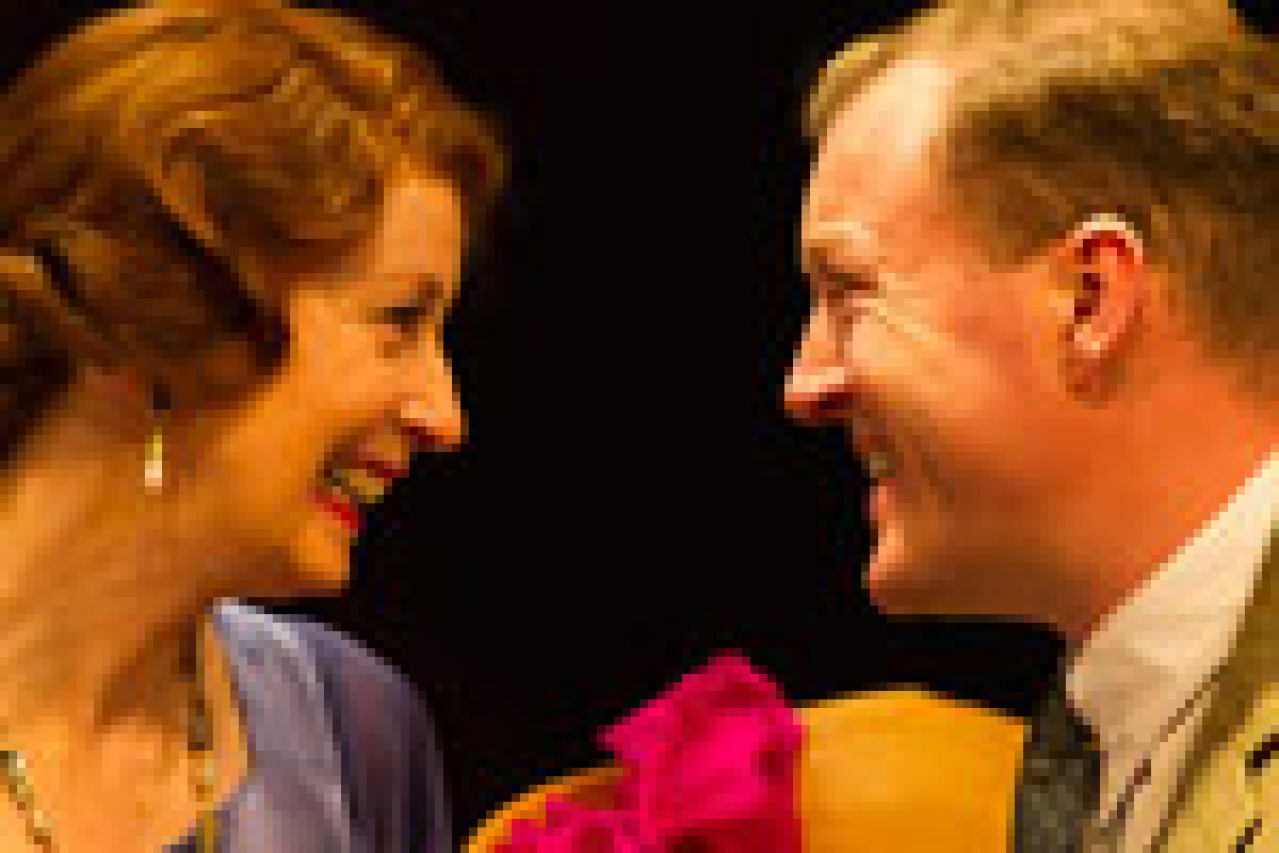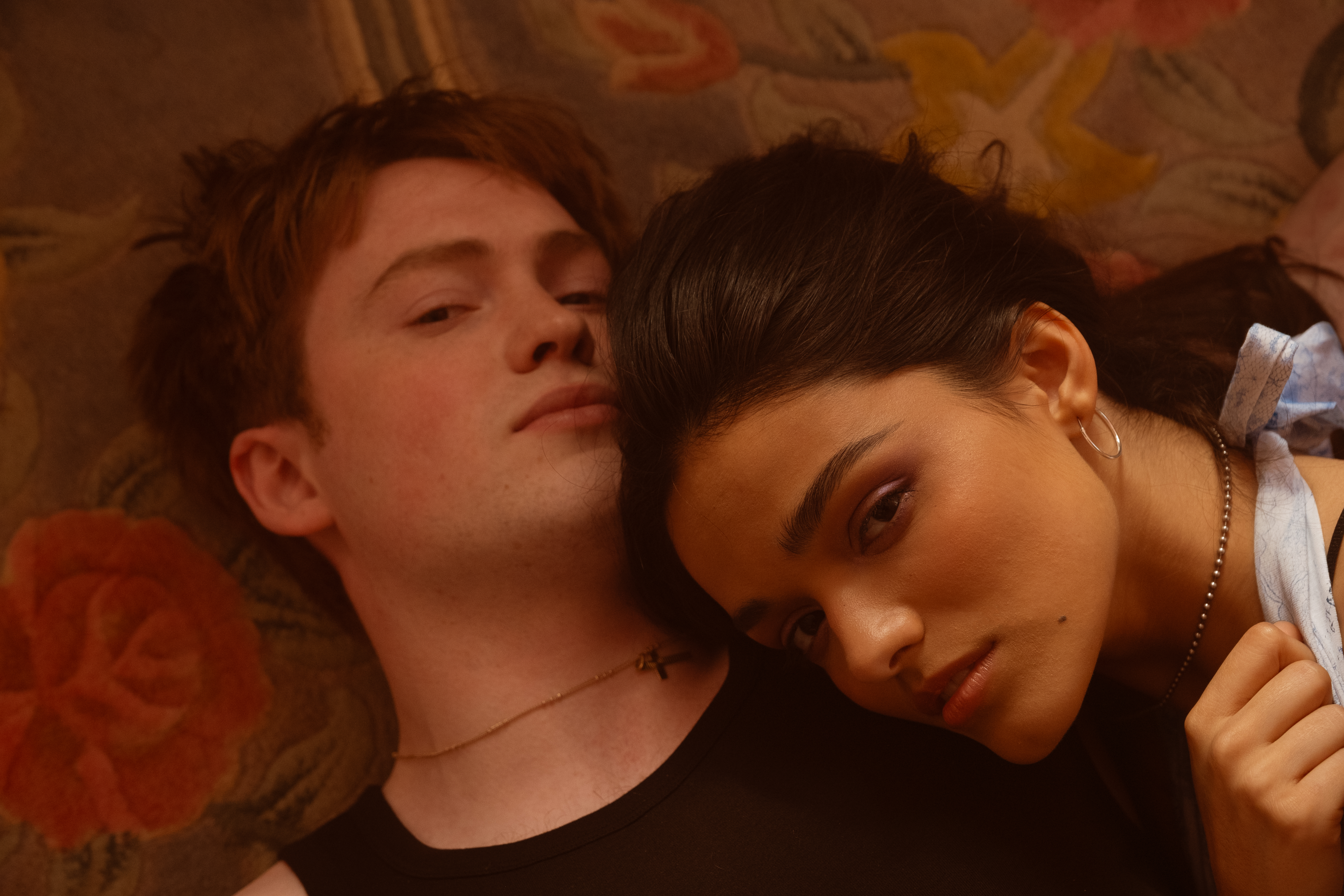Hay Fever

in Hay Fever
(© Patrick Redmond)
The Gate Theatre’s revival of Noel Coward’s classic comedy, Hay Fever, now at the Dock Street Theatre as part of Spoleto Festival USA, will make many theatergoers wonder why such a bustling three-act comedy isn’t done more often.
Director Patrick Mason drapes the stage with a silk curtain bearing a colorful reclining odalisque hat Matisse or Modigliani might have produced on a bad day. As the maid slides this scrim to stage right as part of her cleaning chores, the “curtain up” moment resembles the beginning of a puppet show as painter Simon Bliss (Tadhq Murphy) is revealed putting the final touches on his latest sketch, while his sister Sorel (Rebecca O’Mara) lounges on a sofa.
We revert to theatrical flair — and an old-style star entrance — when we meet the family matriarch, Judith (Ingrid Craigie), a faded star who is contemplating both a comeback on the stage and a seduction of a fresh young lover in the Japanese guestroom. However, while Judith was inviting the athletic Sandy Tyrell up for the weekend, Simon had designs on installing Myra Arundel (Aoibheann O’Hara) in the Japanese room and Sorel has set up a tryst with a diplomat, Richard Greatham (Mark O’Halloran).
The grand quadrille is completed when Bliss patriarch, and renowned novelist, David (Stephen Brennan) walks in and nonchalantly informs the family that young Jackie Coryton is to have the Japanese room for the weekend. As David is the only steady stream of income in the Bliss household, everyone must kowtow to his wishes.
Further lubricating the plot, the social-climbing Myra has designs on David and Richard is starstruck by Judith. Given the vanity and impulsiveness of the Blisses, partner swapping is inevitable — especially since Sandy and Jackie are so malleable.
If the heavy traffic makes it impossible for Coward to adequately develop his roster of visitors to any depth, they become enticing outlines for these accomplished performers, directors, and designer to color in while the playwright’s design puts them through their racy paces. Here, Mason, costume designer Eimer Ní Mhaoldomhnaigh, and set designer Michael Pavelka have created exactly the right upper-crust bohemian palette.
Craigie has the perfect look for Judith, but her theatricality lacks the regality and stentorian force of a diva. Murphy doesn’t sit on a sofa so much as he hops onto it like a frog, donning a matador’s costume for dinner when the gents dress in tuxes and even his dad sports a smoking jacket.
O’Mara makes Sorel’s sluttishness the natural outgrowth of her laziness. Brennan is an urbane old lecher as David — with a surprising hop in his step as he chases after Myra, whom O’Mara gives the predatory edge of a panther. O’Halloran, whose Richard is the essence of timidity and conventional shockability — with the exception of one sublime moment of suavity — also fares extremely well.
Unfortunately, the production, as a whole, suffers from frequent bouts of inaudibility. Indeed, the Act 2 game of charades becomes even more pantomime than intended because the ensemble fails to project, and the key linkage between the play-acting in Acts 1 and 2 is mostly blurred. Luckily, the comedy of the final scene is largely communicated visually as the guests make their collective escape, so we leave with a good taste in our mouths.











